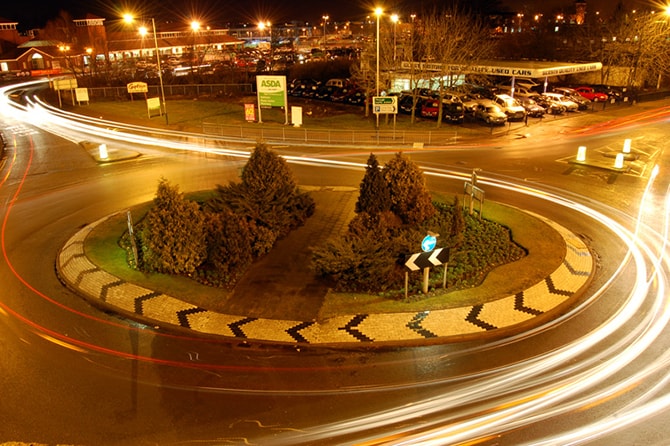Americans are adopting the safer, cheaper-to-maintain and more environmentally-friendly roundabouts. Despite the advantages, American drivers are actively resisting such a basic piece of roadwork because they don’t understand it.
According to a New York Times article, drivers are resistant to the change, seeing the European export as nuisance. "There's a lot of what I call irrational opposition. People don't understand. They just don't understand roundabouts," according to Eugene R. Russell Sr, a civil engineering professor at Kansas State and the chairman of a national task force on roundabouts.
This is because intersections have been a staple of American towns for at least sixty years. There's also some confusion about what a roundabout actually is. There are however signs that things are about to changing.
The Department of Transportation does not keep statistics on roundabouts, but experts point to cities like Wisconsin, which has built about 100 roundabouts since 2004, and plans to build 52 more next year. Maryland is closing in on 200 while Kansas has nearly 100. According to Edward Myers, a senior principal at Kittelson & Associates, there are about 2,000 roundabouts in this country, most built in the last decade.
They are not well received by drivers though. As an example, in Quentin, Pennsylvania, residents were very upset to learn that a local stoplight intersection will be replaced by a roundabout. “I just foresee a lot of accidents,” said John Horstick, who owns a nearby restaurant. A petition circulated at his restaurant and garnered hundreds of signatures in a few days.
Roundabouts first appeared in the United States back in the early 90s. Drivers are mistaking them for traffic circles, like the Columbus Circle in New York or Dupont Circle in Washington. Traffic circles usually operate at higher speeds, and some have traffic signals within their rings.
Studies have found that replacing lights and stop signs with roundabouts reduce harmful emissions by more than 30 percent because there is less starting and stopping. They are also safer than traditional intersections because their design forces drivers to reduce speed, thus making accidents less fatal.
According to a New York Times article, drivers are resistant to the change, seeing the European export as nuisance. "There's a lot of what I call irrational opposition. People don't understand. They just don't understand roundabouts," according to Eugene R. Russell Sr, a civil engineering professor at Kansas State and the chairman of a national task force on roundabouts.
This is because intersections have been a staple of American towns for at least sixty years. There's also some confusion about what a roundabout actually is. There are however signs that things are about to changing.
The Department of Transportation does not keep statistics on roundabouts, but experts point to cities like Wisconsin, which has built about 100 roundabouts since 2004, and plans to build 52 more next year. Maryland is closing in on 200 while Kansas has nearly 100. According to Edward Myers, a senior principal at Kittelson & Associates, there are about 2,000 roundabouts in this country, most built in the last decade.
They are not well received by drivers though. As an example, in Quentin, Pennsylvania, residents were very upset to learn that a local stoplight intersection will be replaced by a roundabout. “I just foresee a lot of accidents,” said John Horstick, who owns a nearby restaurant. A petition circulated at his restaurant and garnered hundreds of signatures in a few days.
Roundabouts first appeared in the United States back in the early 90s. Drivers are mistaking them for traffic circles, like the Columbus Circle in New York or Dupont Circle in Washington. Traffic circles usually operate at higher speeds, and some have traffic signals within their rings.
Studies have found that replacing lights and stop signs with roundabouts reduce harmful emissions by more than 30 percent because there is less starting and stopping. They are also safer than traditional intersections because their design forces drivers to reduce speed, thus making accidents less fatal.

